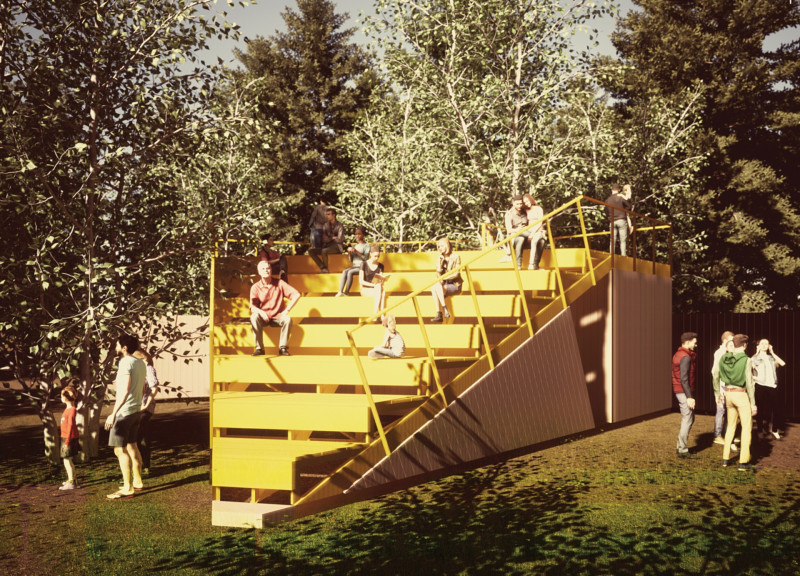5 key facts about this project
"Food and Folly at the Festival" is a multifunctional space located in a community-centric setting, designed to serve food and encourage social interaction during festival events. The design focuses on flexibility, creating connections through its layout while fitting well with the surrounding environment. The triangular shape adds to the overall aesthetic, making the space inviting for visitors.
Design Flexibility
The structure primarily acts as a food preparation and serving facility during a festival that lasts about ten days. However, in the off-season, it changes into a landscape folly, attracting passersby and offering them a chance to engage with its unique design. This dual function highlights both short-term utility and long-term value for the community, ensuring a continuous relationship with the space.
Spatial Arrangement
Vendor areas are arranged in a radial pattern, which supports interaction among food providers and enhances audience engagement. This layout allows festival-goers to move freely, creating a lively atmosphere where social connections can develop. The thoughtful organization of space encourages communal participation, making it easy for users to explore various food options.
Material Considerations
While the presentation does not go into detail about specific materials, it suggests the use of readily available dimensional lumber components. This approach makes construction straightforward. The choice of simple materials aligns with the community-oriented design, promoting an accessible space that invites all. The focus on practicality helps ensure that the design remains functional and easy to maintain.
The structure includes a flat area at the top that serves as potential seating or staging space. This design detail adds versatility to the facility. It allows visitors to engage with events or performances from a raised position. This element enhances the overall experience, contributing to a meaningful connection between users and the environment.






















































